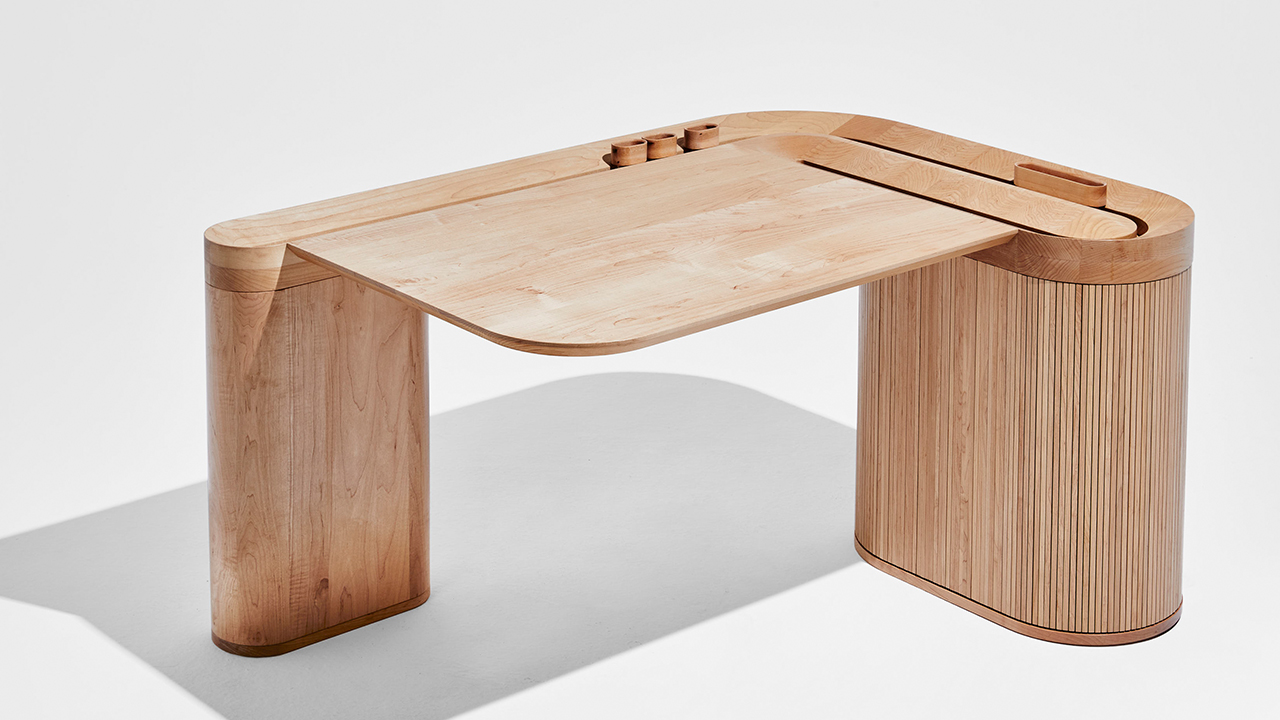When home space has to become an office, a classroom, or an activity room, what does one do to get along with the home environment? This is a new topic for many of us, thanks to the long pandemic. And, not surprisingly, it is also a new direction for the home furnishing industry. The American Hardwood Export Council (AHEC), together with the design and lifestyle magazine “Wallpaper*”, and the London Design Museum put this question to designers. Twenty new-generation designers from 16 countries shared their thoughts through the “Discovered” project. These works were exhibited at the London Design Museum in September this year.
As the only designer from China on this project, Wang Yunhan combines Chinese classical culture, traditional lifestyle and modern home furnishing concepts to give her works a unique charm of traditional elegance.
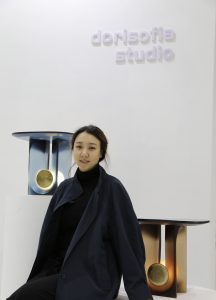
The profile of Doris Wang:
Born in the 1990s, Doris Wang Yunhan graduated from the Central Academy of Fine Arts, then went to the art capital of Milan to continue her studies and returned to China. She was the design director of Shenzhen Jain Design and was responsible for many famous furniture brands. Now she is an independent designer in Zhuhai and Shenzhen in south China’s Guangdong Province, having established her own design studio Dorisofia Studio. She is also a guest lecturer at the Zhuhai Institute of North Technology.
Flowing water and wineglass drifting
What do you have in your mind when you mention the poetry “The Preface of The Lanting”? The full text recitation, the world’s first line of script, or the literati game?
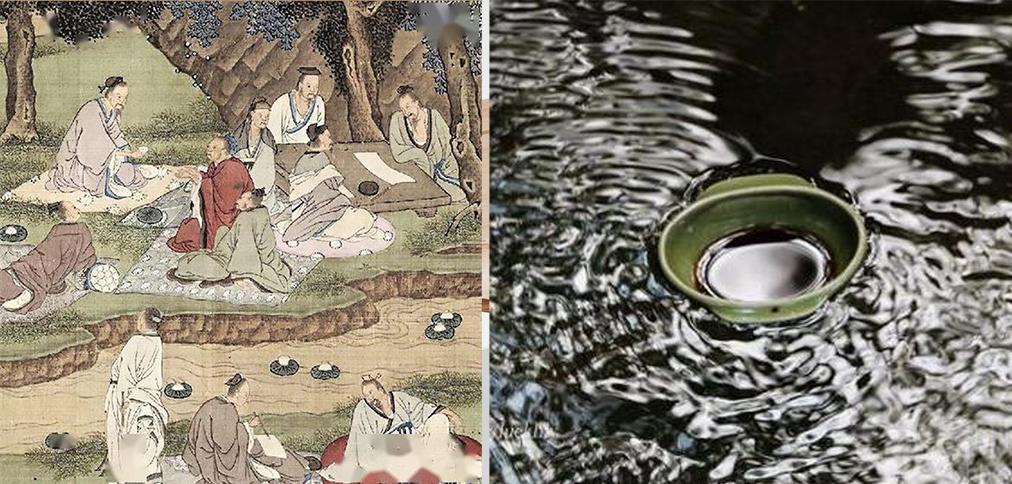
While working from home (during the pandemic), Wang, who missed having tea and chatting with colleagues and friends, decided to bring this thousand-year-old poetry and wine game back to life in the tea culture. Combining the characteristics of the Hakka house in folk-custom architecture, she designed a tea table called “Qu Shui Liu Shang”, which increases the fun of host and guest interaction based on the traditional tea table function, and ignites the desire to get together with relatives and friends during the pandemic.
Amid the pandemic, people can’t go out to collect scenes or even trivia, and can’t brainstorm with friends for inspiration. Life is suddenly quiet and a little uncomfortable.
Wang said frankly: “The past year has been a lonely and introspective period for me.” While learning to live with loneliness, she has also drawn inspiration from the loneliness and now polishes her works with more delicate emotions. “Qu Shui Liu Shang” is an excellent repartee to the pandemic.
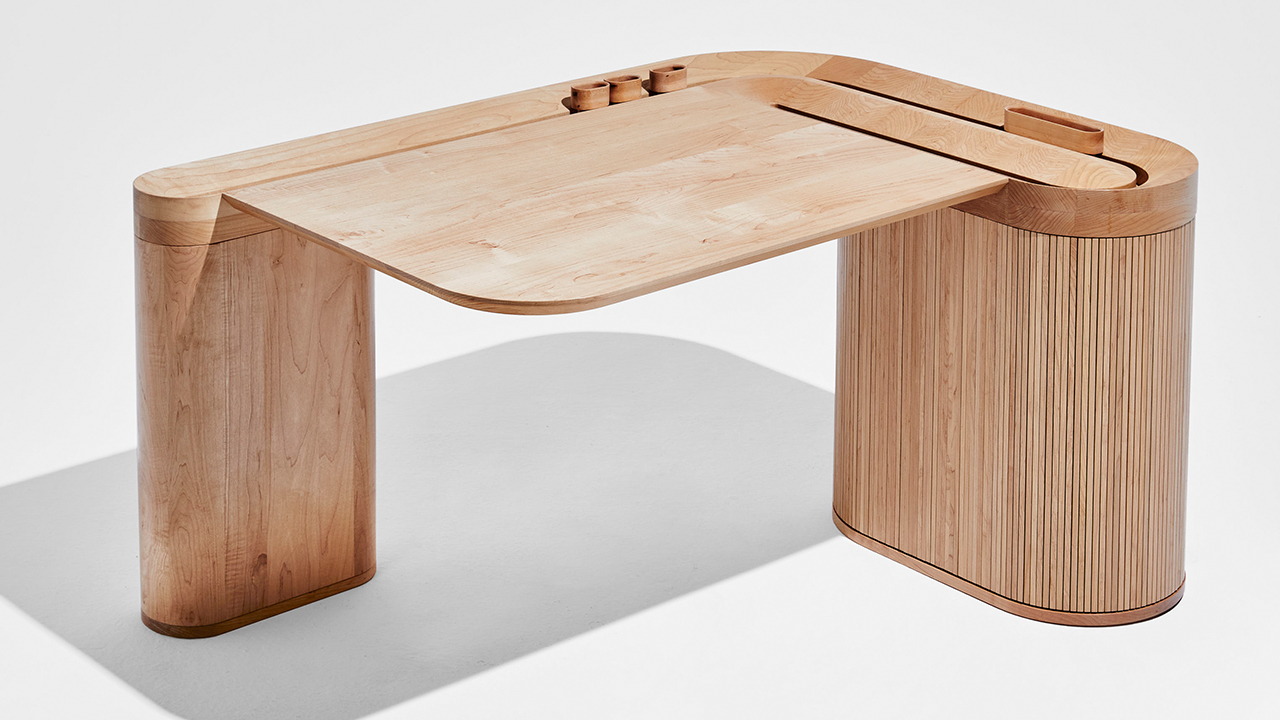
As the initiator of the project, AHEC provided designers with three materials: American red oak, maple (hard maple and soft maple) and cherry. It was hardly a challenge for Wang since hard maple and walnut are her favorite wood species.
Wang said: “With good quality, sustainable character and improved craftmanship, American hardwood is favored by Chinese designers. Compared with other woods, the American hardwood industry has a long history, with very high industry standards, a perfect processing system, as well as a higher material grade and environmental protection, and the texture is more beautiful. I believe that in future, American hardwood will see a big hike in the Chinese home furnishing market share.”
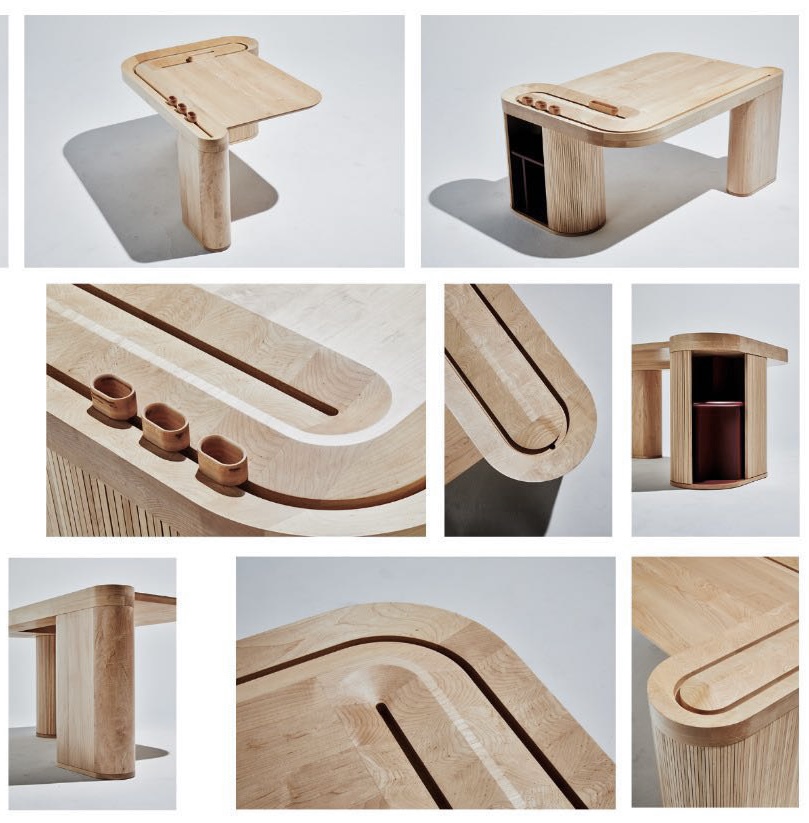
Stretching chair – like a butterfly bone
The “Qu Shui Liu Shang” designed for this “Discovered” project is made with American hard maple, and Wang has another work “Stretching Chair”, which is made with American walnut.
The work is inspired by people stretching their waist. The unique structure inside the seat achieves a more elastic sense of support, allowing users to relax and stretch on the soft backrest; the backrest has a wing-like structure. Supported by a butterfly-shaped walnut skeleton, it is like a butterfly bone, revealing a touch of casual sexiness in the laziness. Using wood as the skeleton is undoubtedly the best way to express this work. This simple work shows a sense of security, temperature and vitality in gentleness.
Wang explained her love for American walnut: “Walnut has a unique dark color and a sense of stability. In addition, compared with other woods, although the price is higher, the mature design makes furniture products more valuable. The texture is usually straight, occasionally with mountain patterns, and even with small tree knots, forms a special pattern. This uncertainty creates uniqueness, which won my heart and is also much sought after by customers.”
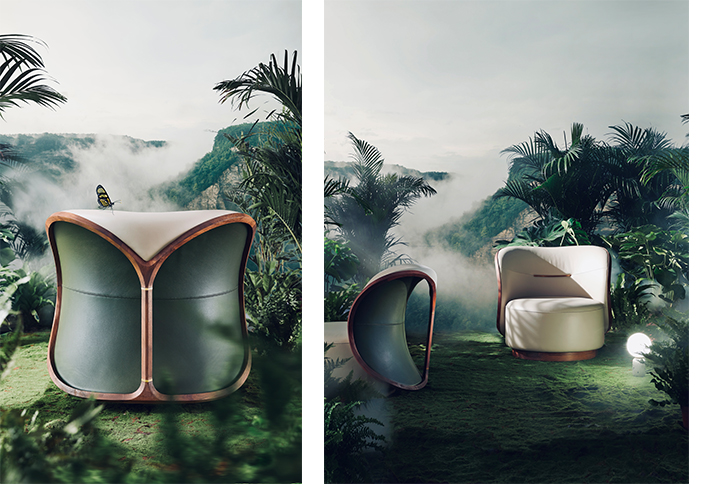
When it comes to thinking about wood design, Wang has some insights: “I think the most important thing in wood design is its renewability. It should be regarded as a very environmentally friendly material under reasonable use. The second is the stability of wood. Coupled with the designer’s mature design and processing technology, it will produce a good chemical reaction, and the work can be preserved for a long time and has a collection value.”
“Wood to me is just like white rice on the table for southern people”
Wang has a deep understanding of wood. She uses a clever analogy: “Wood to me is like rice on a southerner’s table. Although the types of staple food are becoming more and more abundant, rice is still the most commonly eaten and most inseparable. Technology has brought us a variety of materials, but wood is always indispensable. I give priority to wood in both furniture and space works, because its temperature and comfort are unmatched by other materials. Wood was the earliest material used by humans and can easily change its shape and structure. Usually in furniture design, I like to use wood in places where modeling needs are relatively high, because compared to other materials, wood modeling is the most convenient.”
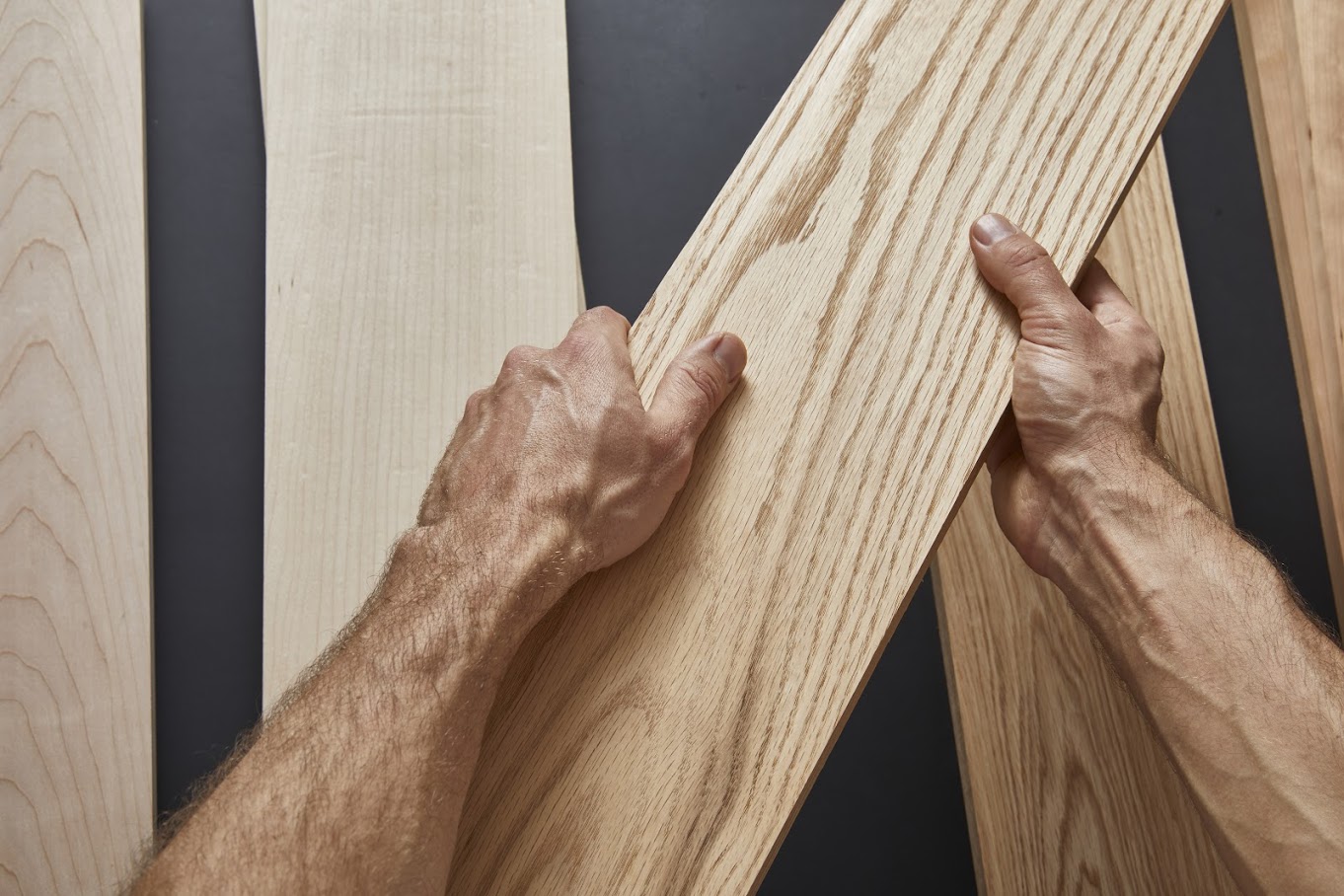
Regarding the trend of household materials and the role of wood, Wang analyzed: “With the advancement of science and technology and improvement in living conditions, people are more willing to choose environmentally friendly, high-quality, and sustainable materials. The trend of wood use in the future will be reflected in the integration of materials and technology. And regardless of new processing technologies or the integration of intelligent equipment and wooden homes, there will be good development. Under the background of a pandemic new normal, people will spend more time at home. The color and smell of wood will give us a better sense of security and comfort, and it can also regulate physical and mental stress and achieve harmonious beauty.”
Wood originates from nature, with uniqueness and uncertainty. It fluctuates over time and changes its texture, making the space more vital. Unlike modern industrial materials such as plastics, metals, and glass, the gentle touch of wood brings to users a more relaxed temperature. Human beings live in this world, and have been constantly perceiving the changes in the natural environment from ancient times. The growth and death of trees is part of the natural changes, so in the final analysis, liking wood is an instinctive demand for nature.
